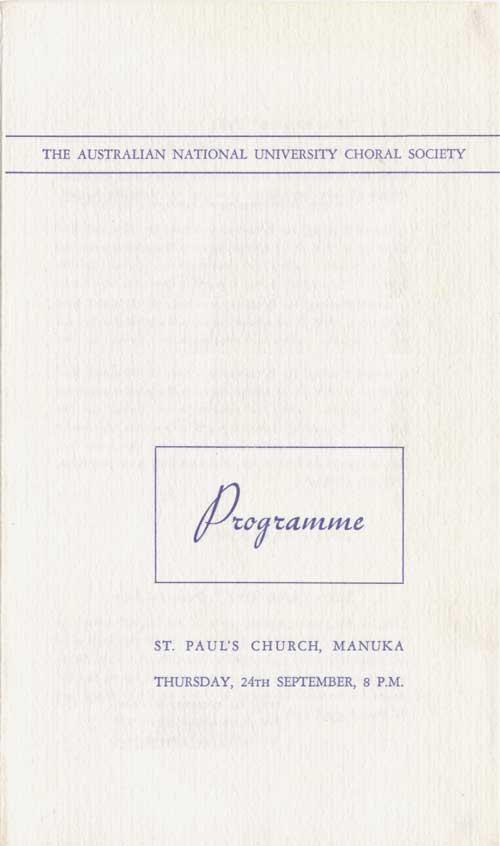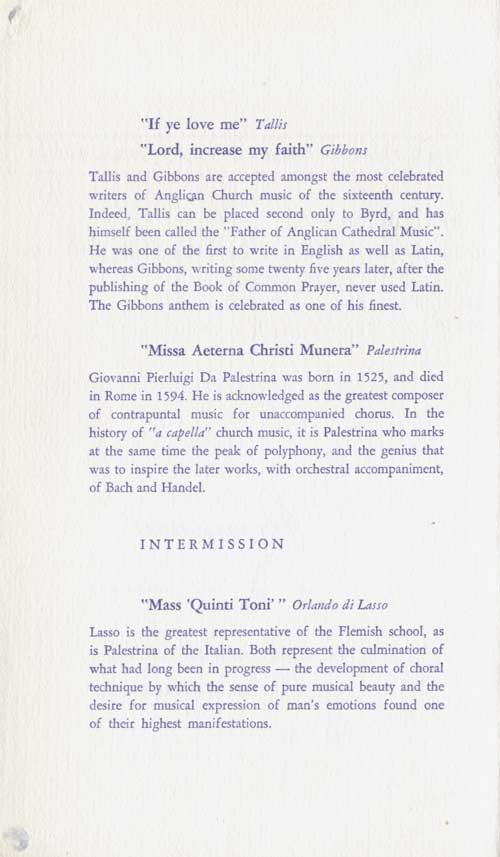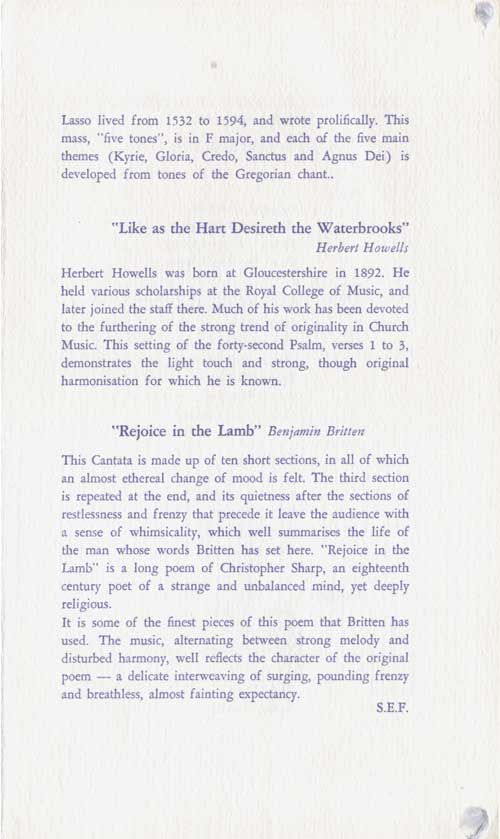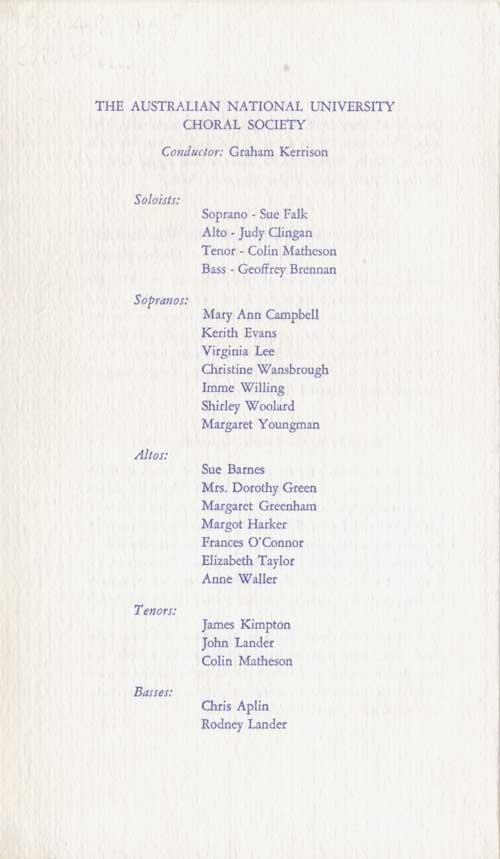

SCUNA history » Concerts » 1964

THE AUSTRALIAN NATIONAL UNIVERSITY CHORAL SOCIETY
Programme
ST. PAUL'S CHURCH, MANUKA
THURSDAY, 24TH SEPTEMBER, 8 P.M.

Tallis and Gibbons are accepted amongst the most celebrated writers of Anglican Church music of the sixteenth century. Indeed, Tallis can be placed second only to Byrd, and has himself been called the "Father of Anglican Cathedral Music". He was one of the first to write in English as well as Latin, whereas Gibbons, writing some twenty five years later, after the publishing of the Book of Common Prayer, never used Latin. The Gibbons anthem is celebrated as one of his finest.
Giovanni Pierluigi Da Palestrina was born in 1525, and died in Rome in 1594. He is acknowledged as the greatest composer of contrapuntal music for unaccompanied chorus. In the history of "a capella" church music, it is Palestrina who marks at the same time the peak of polyphony, and the genius that was to inspire the later works, with orchestral accompaniment, of Bach and Handel.
INTERMISSION
Lasso is the greatest representative of the Flemish school, as is Palestrina of the Italian. Both represent the culmination of what had long been in progress -- the development of choral technique by which the sense of pure musical beauty and the desire for musical expression of man's emotions found one of their highest manifestations.

Lasso lived from 1532 to 1394, and wrote prolifically. This mass, "five tones", is in F major, and each of the five main themes (Kyrie, Gloria, Credo, Sanctus and Agnus Dei) is developed from tones of the Gregorian chant.
Herbert Howells was born at Gloucestershire in 1892. He held various scholarships at the Royal College of Music, and later joined the staff there. Much of his work has been devoted to the furthering of the strong trend of originality in Church Music. This setting of the forty-second Psalm, verses 1 to 3, demonstrates the light touch and strong, though original harmonisation for which he is known.
This Cantata is made up of ten short sections, in all of which an almost ethereal change of mood is felt. The third section is repeated at the end, and its quietness after the sections of restlessness and frenzy that precede it leave the audience with a sense of whimsicality, which well summarises the life of the man whose words Britten has set here. "Rejoice in the Lamb" is a long poem of Christopher Sharp, an eighteenth century poet of a strange and unbalanced mind, yet deeply religious.
It is some of the finest pieces of this poem that Britten has used. The music, alternating between strong melody and disturbed harmony, well reflects the character of the original poem -- a delicate interweaving of surging, pounding frenzy and breathless, almost fainting expectancy.
S.E.F.*

| THE AUSTRALIAN NATIONAL UNIVERSITY CHORAL SOCIETY Conductor: Graham Kerrison |
| Soloists:
Soprano: Sue Falk |
|
Sopranos:
Mary Ann Campbell |
|
Altos:
Sue Barnes |
|
Tenors:
James Kimpton |
|
Basses:
Chris Aplin |
*Presumably Sue Falk.